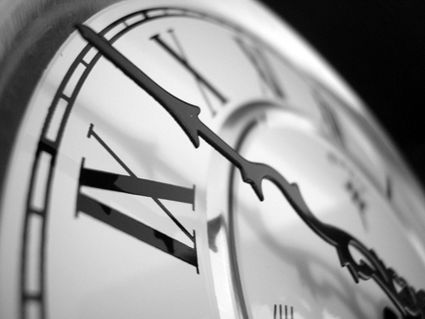Spring Forward on Sunday
Last updated 3/11/2011 at Noon
At 1:59 a.m. on March 13, the standard time will “spring forward” to 3 a.m.
Most Americans will continue using “Daylight Saving Time” (DST) until Nov. 6 when we will “fall back” and return to “Standard Time” (ST). Daylight Saving Time is the practice of advancing clocks during the summertime so that afternoons have more daylight and mornings have less. The official purpose of this is to make better use of the natural and cost-free energy given by the sun. The time shift has become so cliche that we hardly even notice its coming and going. But there is a rich history behind this interesting practice. Daylight Saving Time was instituted by a changing world and continues to evolve to meet our needs.
Before 1895, the modern concept of Daylight Saving Time did not exist, although it has always been commendable to “make good use of daylight.” In ancient times, sundials were used to tell time.
Of course, sundials naturally adjust to the season.
When the days were longer, the work day was longer.
When the nights were longer, the work day was shorter.
In a sense, there has always been Daylight Saving Time.
Although Benjamin Franklin was not the one who invented the modern practice, he did reflect the idea in a sense when he said “Early to bed, early to rise, makes a man healthy, wealthy, and wise.” Franklin understood that a person could conserve energy by making use of daylight hours, and thus become wealthy.
This he expressed in several letters.
But at that time, there was no reason to shift the time in order to make use of the daylight.
The concept of universal time began with railroad schedules.
Before then, time was a local matter kept by clocks in towers and steeples.
Time from town to town differed greatly.
Daylight Saving Time in the modern sense was conceived around the turn of the century by an entomologist and astronomer named George Vernon Hudson.
Hudson did shift work to support himself as he pursued his goals.
The job gave him the leisure to collect his insects making daylight very valuable to him.
In 1895, Hudson presented his idea to the Wellington Philosophical Society in a paper wherein he proposed a two-hour time shift to make the lengthy summer days more useful.
Since then, the idea has gained widespread popularity and has been implemented in many countries, though not all.
The reality of the practice has existed since World War I. Germany and Austria implemented the plan in 1916 to conserve energy. Most significant European countries followed their example in 1916 and 1917. The United States held out until 1918 when they passed “An Act to Preserve Daylight and Provide Standard Time for the United States.” The same act established the time zones that we know today. The law was so unpopular that it was repealed the next year in spite of a veto from President Wilson. The practice became nothing more than a local option.
The practice was again implemented as an emergency measure during World War II (1942-1945). The practice was used with inconsistency during the 1950’s and 1960’s with no universal date or time to make the time shift.
In 1974, however, President Richard M. Nixon signed “The Emergency Energy Conservation Act of 1974.” Studies during that time assumed that the practice would trim the U.S. energy use by one percent. The same justification was used in 2007, when the period of Daylight Saving Time was extended by one month. Studies, however, have shown that this practice has little or no effect on our level of energy use. The effect is even adverse in some areas of the world.
At one time, our lives were intimately connected to the daylight. When the sun set, people went to sleep. When the sun rose, they rose with it and went to work. Our lives are not as connected to the daylight as they once were. Our lives are connected more with the universal time. With electricity and twenty-four-hour convenient stores, we can usually do what we want, whether it is daylight or dark. For this reason, the time shift has little affect on our energy use.
Now Daylight Saving is not much more than a tradition. It is a happy tradition for Patty Perkins, an employee of Bridge City Bank, who plays with her six-year-old son Landon in their yard after work. It is a not-so-happy tradition for Danielle Frazier, a student from Bridge City High School, who states, “I do not appreciate losing an hour of my precious sleep. It is no fun!” Perhaps Danielle will change her mind about Daylight Saving Time when we all “fall back” in November and we can all sleep an extra hour.















Reader Comments(0)